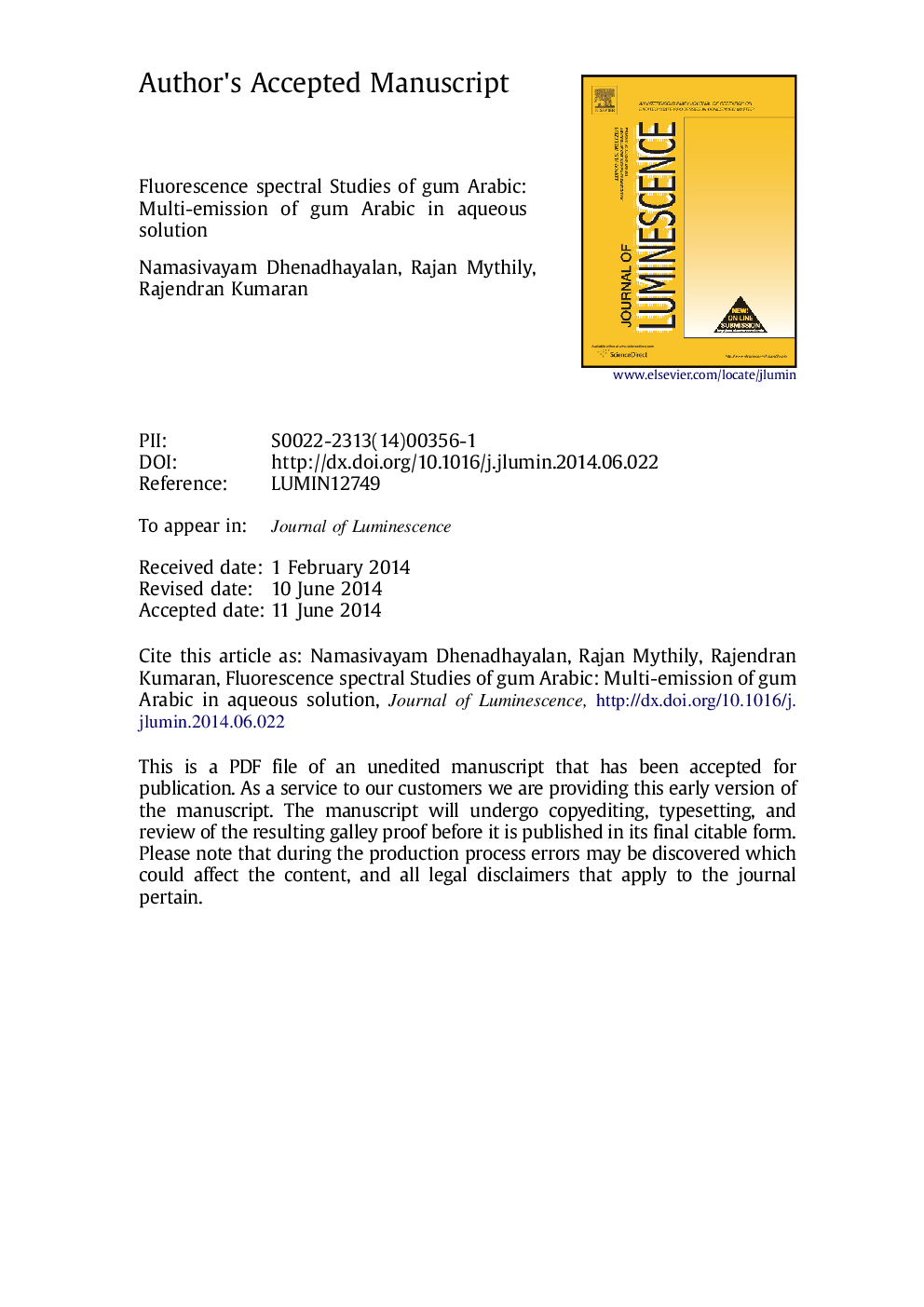| Article ID | Journal | Published Year | Pages | File Type |
|---|---|---|---|---|
| 5399450 | Journal of Luminescence | 2014 | 37 Pages |
Abstract
Gum Arabic (GA), a food hydrocolloid is a natural composite obtained from the stems and branches of Acacia Senegal and Acacia Seyal trees. GA structure is made up of highly branched arabinogalactan polysaccharides. Steady-state absorption, fluorescence, and time-resolved fluorescence spectral studies of acid hydrolyzed GA solutions were carried out at various pH conditions. The fluorescence in GA is predominantly attributed to the presence of tyrosine and phenylalanine amino acids. The presence of multi-emissive peaks at different pH condition is attributed to the exposure of the fluorescing amino acids to the aqueous phase, which contains several sugar units, hydrophilic and hydrophobic moieties. Time-resolved fluorescence studies of GA exhibits a multi-exponential decay with different fluorescence lifetime of varying amplitude which confirms that tyrosine is confined to a heterogeneous microenvironment. The existence of multi-emissive peaks with large variation in the fluorescence intensities were established by 3D emission contour spectral studies. The probable location of the fluorophore in a heterogeneous environment was further ascertained by constructing a time-resolved emission spectrum (TRES) and time-resolved area normalized emission spectrum (TRANES) plots. Fluorescence spectral technique is used as an analytical tool in understanding the photophysical properties of a water soluble complex food hydrocolloid containing an intrinsic fluorophore located in a multiple environment is illustrated.
Keywords
Related Topics
Physical Sciences and Engineering
Chemistry
Physical and Theoretical Chemistry
Authors
Namasivayam Dhenadhayalan, Rajan Mythily, Rajendran Kumaran,
